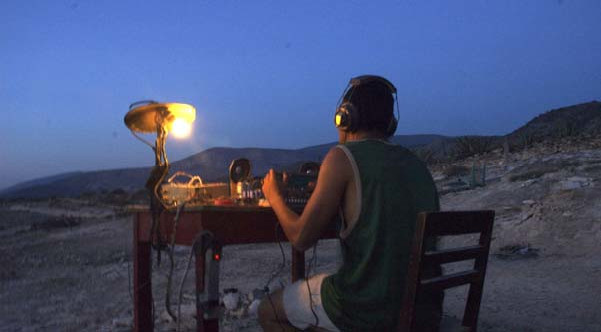Starting with its name, the drone is foreign to Spanish-speaking cultures: it is an invader of both aerial space and language. How can we speak about it without invoking inexplicable powers, whether they be magical or divine? Imagined as an immaculate, ethereal and implacable artefact that glides elegantly in the air, the drone promises to disembody us, to make us fly without even taking off the ground, to show us parallel worlds above our heads as well as secret domains and clandestine activities that take place on the ground yet remain otherwise hidden from us. Clearly, the drone has qualities of a technological fetish. Alongside the faith in its visual reach there is faith in its power to resolve conflicts, establish justice and liberate the oppressed from above. More than anything, however, the drone is a product of Western civilisation, an ideological narrative of supremacy that is imposed on postcolonial societies through instruments of scrutiny, intimidation and subjugation. No wonder that tribal regions in Pakistan, Yemen, Syria and Afghanistan associate the drone with terror, devastation and death. In most of the Spanish-speaking world the military uses of drones remain a distant, somewhat baroque concern. There is no constant, realistic fear of being killed by a hellfire missile, as there is in the Middle East. Yet drones are indeed lying in wait, for example in the border between Mexico and the United States, as well as in certain coastal areas and territories controlled by organised crime. From the ground, such devices remain unfathomable flying machines with strange and alien agendas, incapable of dialogue or empathy. For the time being, they represent an ideal of impunity: a cosmic eye both distant and omnipotent.
Flexibility makes the drone different from other military technologies (such as carpet bombings, napalm and Agent Orange, or depleted uranium shells) that can produce mass casualties and long term effects when used against populations. Flexibility also allows us to dream about extending our reach and power on a State level but also individually and collectively. Like the computer, the drone can be a liberating tool, a technology with a potential for social appropriation and reconfiguration. In other words, the drone is also subject to Cyberpunk’s utopian maxims: ‘…the street finds its own uses for things’ (William Gibson) and ‘Technology wants to be free’ (Kevin Kelly). Speaking of popular culture, we have seen clever representations of the drone in films such as Alex Rivera’s Sleep Dealer (2008), where it appears as a vehicle of both destruction and transcultural entertainment in both sides of the Mexico-U.S. border. As such, the drone belongs to the era of nation-state collapse and consolidation of the corporation-state, which is supposedly borderless but has more gates and surveillance than ever before. In an interview, Rivera has declared:
The drone is the most visceral and intense expression of the transnational/telepresent world we inhabit… we live in a transgeographic reality. The military drone is a transnational and telepresent kill system, a disembodied destroyer of bodies. As such, the drone is the most powerful eruption and the most beguiling expression of the transnational vortex. The reason it has become a pop-cultural phenomenon and an object of fascination and study for people in many different sectors is that it is an incandescent reflection, the most extreme expression of who we are and what we’ve become generally. (Quoted in Harris, 2012)
There is no monolithic drone culture, since the drone, as a device, is constantly reinvented by both professionals and hobbyists. It is an imperial technology that nevertheless commands the interest of amateurs and ‘small’ aeronautical enterprises as much as industrial giants. Its commercial terrain is expanding greatly, and everyone is competing for public and private contracts as well as for turning the drone into a consumer need equivalent to the laptop or the smartphone. The drone is already having an enormous impact on clandestine commerce and on organised crime, beyond the well-known fact some drug cartels use drones to smuggle their product across borders, especially between Mexico and the United States. At the same time, the drone offers possibilities for account settling and even for cultural revenge against the military-industrial complex. On May this year, the artist KATSU used a drone to tag a Calvin Klein billboard in New York’s SoHo. We may expect to see other civil counter-strategies, counter-surveillance mechanisms and novel forms of protest against the State and its policies of intimidation. Drones are power tools with the ability to transform the political and social landscape for ever.

References
Harris, M. (2012) ‘Border Control’, The New Inquiry (2 July).